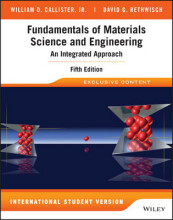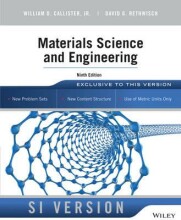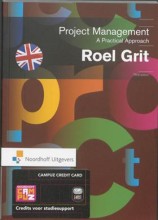Try our study magic for free
Summary: Fundamentals Of Materials Science And Engineering | 9781119249252 | William D Callister, et al
- This + 400k other summaries
- A unique study and practice tool
- Never study anything twice again
- Get the grades you hope for
- 100% sure, 100% understanding
a PDF, study it super fast
- No sign up, email or credit card needed!
- AI makes unlimited flashcards
- Get unlimited quizzes and tests
- Ask AI anything
- No sign up, email or credit card needed!
- Have and keep perfect overview
- Make flashcards, notes and mind maps
- Review, test and score!
Read the summary and the most important questions on Fundamentals of Materials Science and Engineering | 9781119249252 | William D. Callister, JR and David G. Rethwisch
-
2 Atomic Structure and Interatomic Bonding
This is a preview. There are 3 more flashcards available for chapter 2
Show more cards here -
Name the two atomic models cited, and note the differences between them.
Bohr and wave mechanical. Whereas the Bohr model assumes electrons to be particles orbiting the nucleus in discrete paths, in wave mechanics we consider them to be wavelike and treat electron position in terms of probability distribution. -
Describe the important quantum-mechanical principle that relates to electron energies.
The energies of electrons are quantized, only specific values of energy are allowed. -
What is the Pauli Exclusion principle?
Each electron state can accommodate no more than two electrons which must have opposite spins. -
What bonds contain ceramics?
Ionic bonds/mixed ionic-covalent bonds -
What bonds contain molecular solids?
Van der Waals bonds -
What bonds contain Semi-metals?
Mixed covalent-metallic bonds -
What bonds contain intermetallics?
Mixed metallic-ionic bonds -
2.1 Introduction
This is a preview. There are 1 more flashcards available for chapter 2.1
Show more cards here -
What do properties of solid materials depend on?
The geometric arrangements and by interactions that exist among constituent atoms or molecules. -
2.2 Fundamental Concepts
This is a preview. There are 8 more flashcards available for chapter 2.2
Show more cards here -
What is the atomic mass of a specific atom?
The sum of the masses of protons and neutrons within the nucleus. -
2.3 Electrons in Atoms
This is a preview. There are 25 more flashcards available for chapter 2.3
Show more cards here -
What is the Bohr atomic model?
A model that assumes that electrons revolve around the atomic nucleus in discrete orbitals.
- Higher grades + faster learning
- Never study anything twice
- 100% sure, 100% understanding
Topics related to Summary: Fundamentals Of Materials Science And Engineering
-
Atomic Structure and Interatomic Bonding - Electrons in Atoms
-
Atomic Structure and Interatomic Bonding - Bonding Forces and Energies
-
Atomic Structure and Interatomic Bonding - Primary Interatomic Bonds
-
Atomic Structure and Interatomic Bonding - Secondary bonding or van der Waals Bonding
-
Atomic Structure and Interatomic Bonding - Mixed bonding
-
Structures of Metals and Ceramics - Fundamental Concepts
-
Structures of Metals and Ceramics - Metallic Crystal Structures
-
Structures of Metals and Ceramics - Ceramic Crystal Structures
-
Structures of Metals and Ceramics - Carbon
-
Structures of Metals and Ceramics - Crystallographic Directions
-
Structures of Metals and Ceramics - Close-packed Crystal structures - Ceramics
-
Structures of Metals and Ceramics - X-Ray Diffraction: Determination of crystal structures
-
Structures of Metals and Ceramics - Noncrystalline Solids
-
Polymer Structures - Hydrocarbon Molecules
-
Polymer Structures - The Chemistry of Polymer Molecules
-
Polymer Structures - Molecular Weight
-
Polymer Structures - Molecular Structure
-
Polymer Structures - Molecular Configurations - Stereoisomerism
-
Polymer Structures - Copolymers
-
Polymer Structures - Polymer Crystallinity
-
Polymer Structures - Polymer Crystals
-
Imperfections in Solids - Point Defects in Ceramics
-
Imperfections in Solids - Impurities in Solids - Impurities in Metals
-
Imperfections in Solids - Impurities in Solids - Solid solutions
-
Imperfections in Solids - Dislocations-Linear Defects
-
Imperfections in Solids - Interfacial Defects - Grain Boundaries
-
Imperfections in Solids - Interfacial Defects - Twin Boundaries
-
Imperfections in Solids - Atomic Vibrations
-
Imperfections in Solids - Microscopic Techniques































